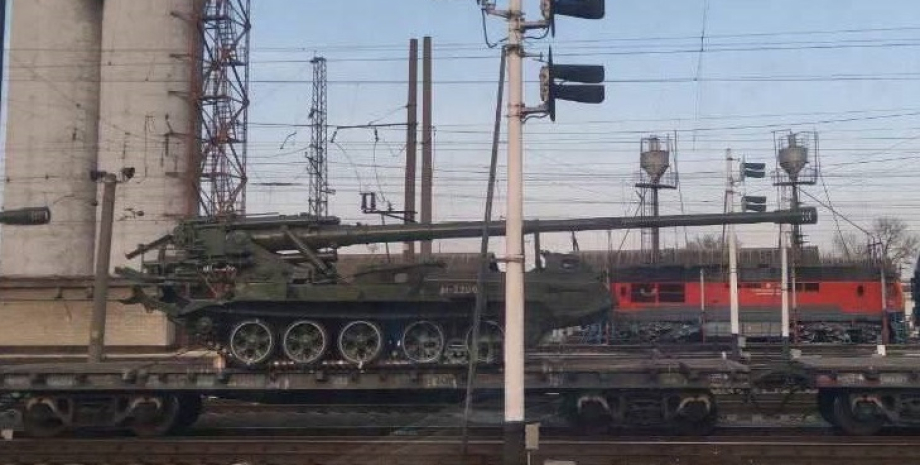Destruction of Rare North Korean Self-Propelled Gun "Koksan" on the Zaporizhzhia Front

The
Armed Forces of Ukraine have reported the destruction of a rare North Korean
self-propelled artillery unit (SPA) – the 170mm “Koksan” – on a section of the Zaporizhzhia front.
According to the General Staff of the Ukrainian Armed Forces, the artillery
system was detected by reconnaissance assets and then struck with
precision-guided munitions.
The "Koksan" is considered one of the longest-range self-propelled
artillery systems in the world, with a maximum firing range of
up to 60 km when using
rocket-assisted projectiles. These systems are extremely rare and have almost never been recorded
in the theater of combat in Ukraine.
Ukrainian UAV operators released video footage of the
strike, clearly showing the weapon’s distinctive long barrel, which enabled it
to be identified as the M-1978 Koksan, developed in North Korea during the 1970s.
The damage was confirmed by secondary reconnaissance and drone surveillance.
This incident is direct evidence of arms transfers from North Korea to Russia,
something previously reported by both Western intelligence and Ukrainian
officials. The destruction of such a rare system proves that military cooperation between Moscow and
Pyongyang has entered an active phase, despite international
sanctions.
North Korea is a sanctioned country officially prohibited from exporting
weapons. Russia’s use of such artillery systems highlights the depletion of its own stockpiles
and an increasing reliance on
foreign suppliers.
Although the Koksan’s effectiveness in real combat is
limited – with long reload
times, lack of automation, and poor protection – its deployment
has a propaganda function,
attempting to demonstrate range and technical diversity in Russia’s arsenal.
The destruction of such a system vividly demonstrates the vulnerability of even exotic
weaponry in the face of modern reconnaissance and precision
strike capabilities. It also underscores the system’s technical obsolescence, as the
Koksan lacks modern targeting and drone defense systems.
Eliminating such a rare artillery unit also delivers a psychological and informational
blow to the military propaganda efforts of both Russia and
North Korea. Furthermore, it signals to the international community that Russia
is broadening its circle of
authoritarian partners to replenish its arsenal.
On the Zaporizhzhia front, the intensity of combat remains
high. Fighting is especially active in the areas of Orikhiv, Verbove, and Robotyne. Ukrainian
forces continue to conduct targeted strikes on enemy rear positions and
artillery assets using UAVs, HIMARS, and conventional artillery.
The destruction of the North Korean Koksan SPA is not only a tactical success for Ukraine but also a significant geopolitical signal. Russia continues to show growing dependence on non-standard sources of weaponry, while Ukraine demonstrates its capability to detect and neutralize such assets effectively – regardless of their origin.
 Latest news
Latest news Latest news
Latest newsTrump and Putin Prepare to Meet Ahead of Zelensky’s White House Visit: A New Phase of Diplomacy or Pressure on Kyiv?
17.Oct.2025
A Shadow over the Russian-Azerbaijani Thaw: What Lies Behind the Arrest of Former Presidential Chief of Staff Ramiz Mehdiyev?
16.Oct.2025
Russia and Syria: A New Chapter in Relations After the Coup
16.Oct.2025
NATO and EU Join Forces to Build a “Drone Wall”
15.Oct.2025
Trump: New bonds of friendship to join Armenia to Azerbaijan
14.Oct.2025
UK to lift its arms embargo on Armenia, Azerbaijan
14.Oct.2025
Russia Opens New Criminal Case Against Opposition Figure Khodorkovsky
14.Oct.2025
Expert analysis by Tigran Khzmalyan: If Pashinyan wins again, Armenia will fall completely under Russia’s influence
14.Oct.2025
The Kremlin Warns the West of Dangerous Escalation: U.S. Plans to Supply Tomahawk Missiles to Ukraine
12.Oct.2025
Moscow Admits Guilt for Downing Azerbaijani Plane: Putin and Aliyev Show “Mutual Understanding of Authoritarian Allies”
10.Oct.2025

 21 Oct 2025
21 Oct 2025








